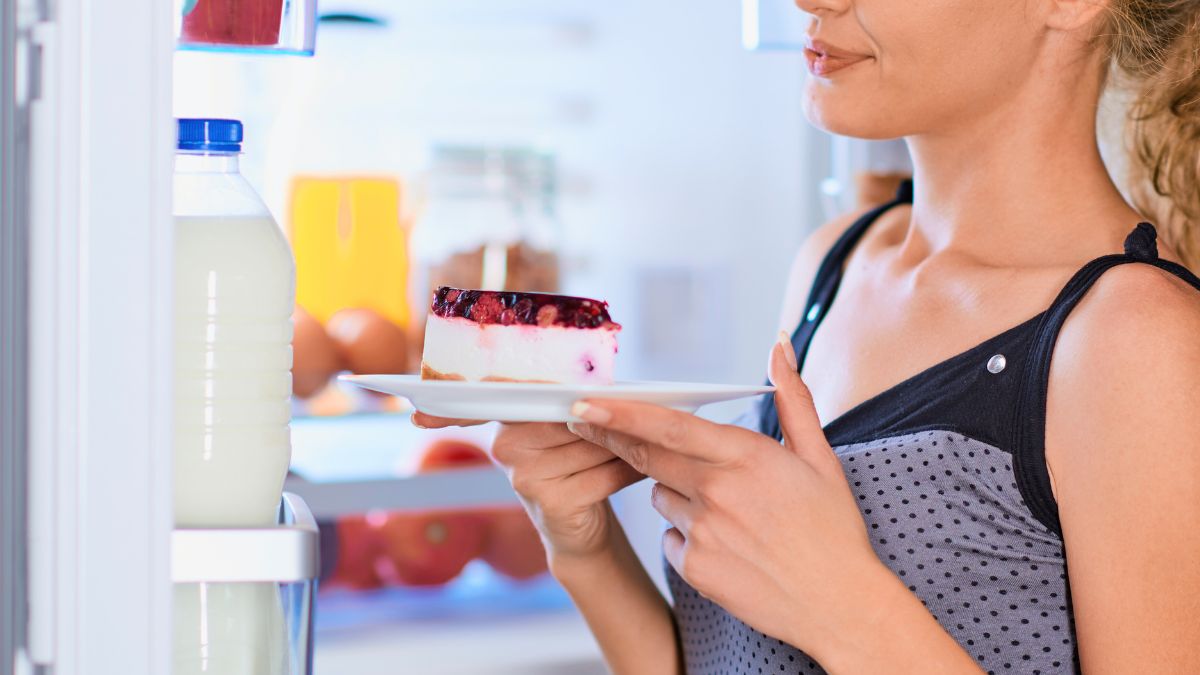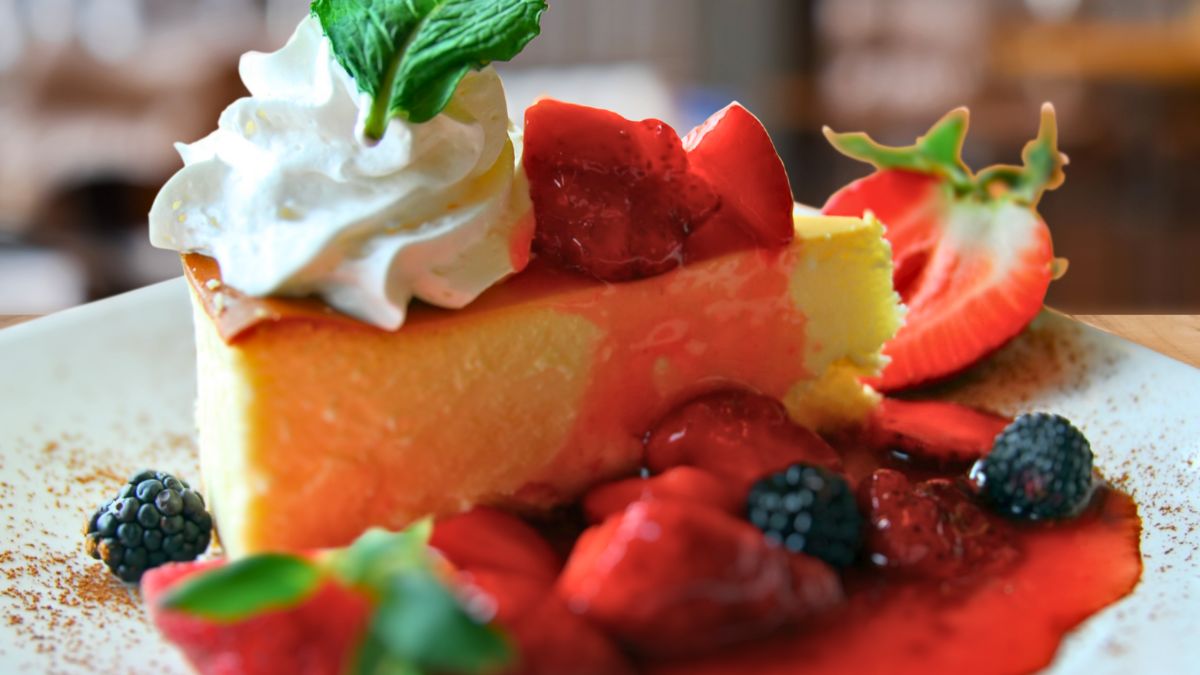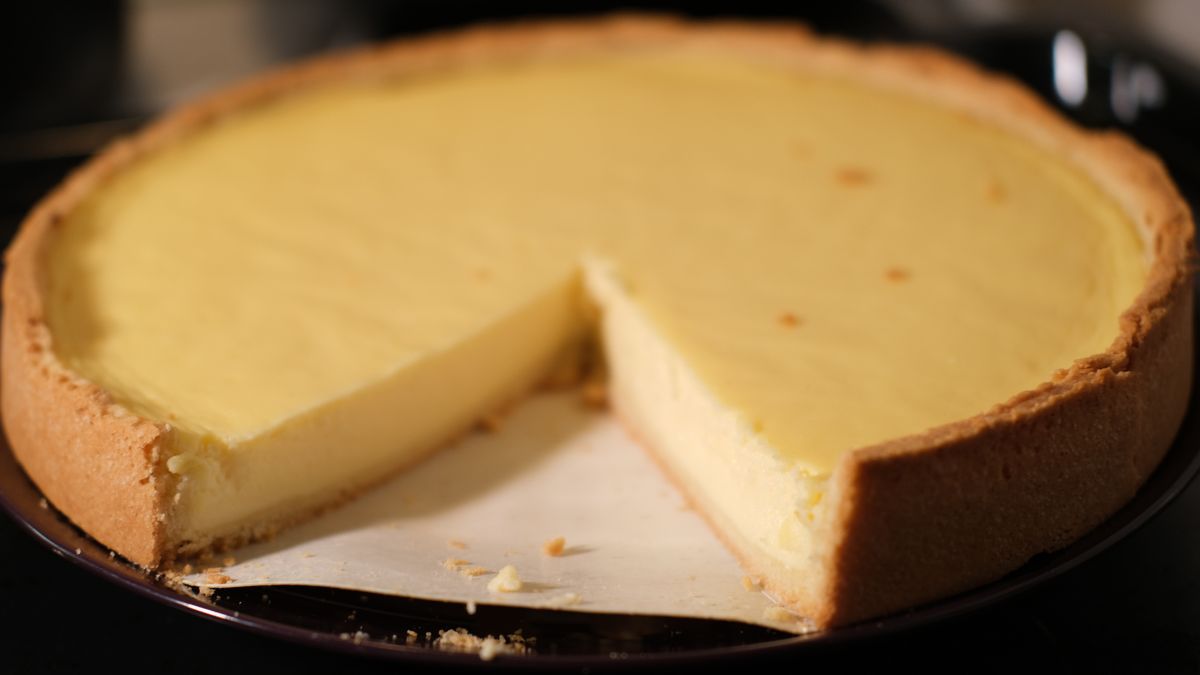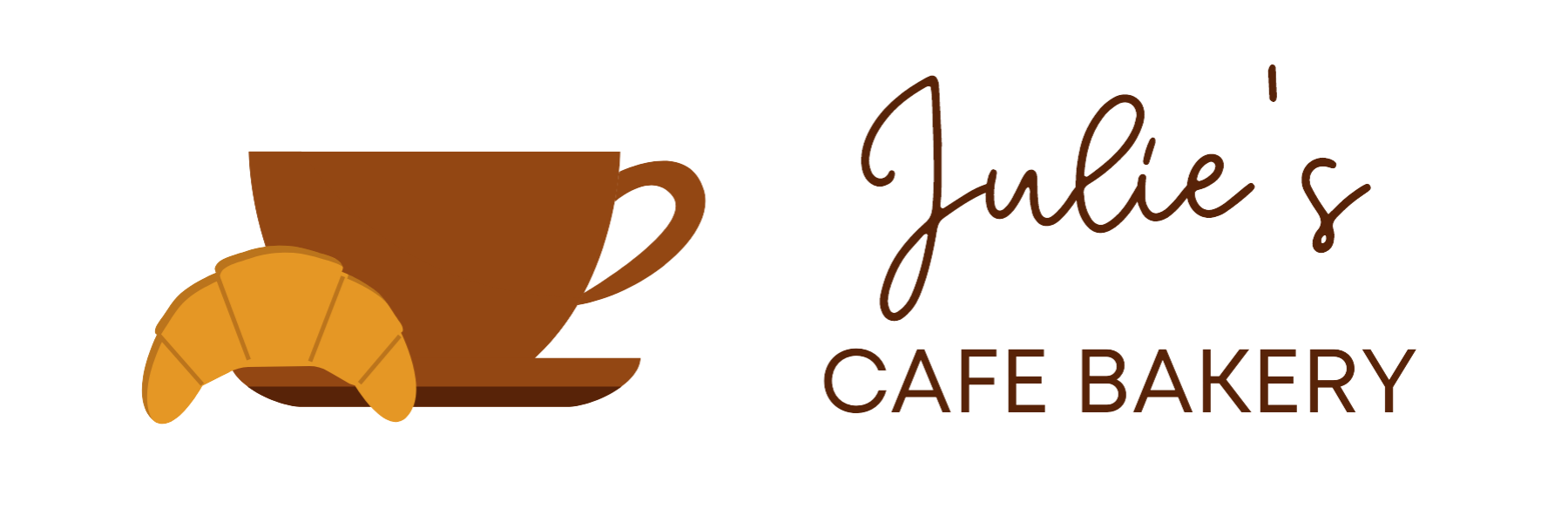How to Fix Too Much Butter in Cheesecake Crust? [6 Simple Solutions]
![How to Fix Too Much Butter in Cheesecake Crust [6 Simple Solutions]](https://juliescafebakery.com/wp-content/uploads/How-to-Fix-Too-Much-Butter-in-Cheesecake-Crust-6-Simple-Solutions.jpg)
As much as I love a rich, buttery cheesecake crust, too much butter makes it heavy and overwhelmingly fatty. Now, don’t get me wrong, I love a substantial cheesecake crust, but adding more butter isn’t the solution. I love experimenting and finding fixes even in the most desperate baking situations, so I just had to write an article about too much butter in cheesecake crust. So, how do you fix too much butter in cheesecake crust?
To fix too buttery crust, you can add more crumbs, refrigerate, press firmly, bake before filling, blot excess butter, and serve carefully. When it comes to too much butter in a cheesecake crust, there’s hardly one thing to do to fix it, but rather a combination of several fixes.
I am known for my enthusiasm and persistence in fixing even the seemingly unfixable pastries, so among my many experiments, I’ve had a good number of successful ones. I simply can’t bear the thought of having all that work be in vain, so I’ve gathered some experience I’d love to share with you. So, in this article, I will tell you how you can fix too much butter in cheesecake crust.
What Happens if You Put Too Much Butter in Cheesecake Crust?
The excessive greasiness is the most apparent and most conclusive sign that you’ve added too much butter to your cheesecake crust. You will notice that the cheesecake crust feels heavier and a little jiggly.
It will probably leave a noticeable greasy residue on your fingers or the surface. This is usually my first sign that I’ll need to apply some fixers. Still, if you notice your cheesecake crust is greasy, don’t rely solely on that sign, but look for others to be sure that excess butter is the sole problem.
Now, this one could be tricky because excess butter isn’t the only thing that causes a soggy cheesecake crust, but luckily, the same fixers apply. To be completely sure that your cheesecake crust is soggy from excess butter, look for other signs, usually greasiness because these two go together.
Other than excess butter, excess liquid also causes a soggy crust. The liquid doesn’t have time to evaporate, so it stays trapped inside the cheesecake crust. On the other hand, if the excess butter is the reason for sogginess, the fat traps the liquid inside, so it doesn’t really matter if you add the right or an even lesser amount of liquid.
Cheesecake, although it is supposed to be soft and rich, should also be slightly crumbly. If you notice that your cheesecake is overly soft and not crumbly at all, it is most likely due to excess butter.
Also, it doesn’t hold its shape very well, and it is likely to have a loose consistency, which can be troubling because the filling won’t be stable between the crusts.
Such a cheesecake usually breaks apart or becomes too sticky, leaving pieces on the knife and the surface. If presentation and aesthetics are important to you, this may be a problem because you won’t be able to cut and serve your cheesecake neatly. In this case, I would definitely use a cover-up.
While butter adds flavor to the crust, too much of it can overpower the other flavors of the cheesecake and any toppings or fillings. Yes, it is very enriching and creates a soft and silky sensation, but you will feel a heavy buttery note as well, and you probably won’t like it.
The closest description of the taste would be a little lighter than eating butter with a spoon.
Adding too much butter to a cheesecake crust also causes uneven baking. Your cheesecake crust will likely brown on some spots sooner than it browns on others, so you will end up with burnt and undercooked patches on the same cheesecake crust.
Excess butter in cheesecake crust causes shrinkage, so you may notice that your crust has become significantly smaller than what you intended. Some shrinkage is expected since excess moisture evaporates during baking, but when you notice a significant volume reduction, you should definitely use some of the fixers below.
How to Fix Cheesecake Crust with Too Much Butter?
Luckily, adding too much butter to your cheesecake crust isn’t the end of your cheesecake. There are things you can do to fix this issue and still end up with a tasty and presentable cheesecake. Glimpse at the solutions I list below and pick out your combination of fixers.
Add More Crumbs
Cheesecake crust recipes often include cracker crumbs, so prepare extra crumbs in case you add too much butter. Adding extra crumbs is a great method to soak up the excess butter since they are dry and absorb butter like crazy.
They may not solve the entire problem; you will likely need to apply some of the methods below as a supportive solution, but they are pretty effective. Prepare additional graham cracker crumbs, cookie crumbs, or whatever base you’re using for the crust.
The role of the additional crumbs is to restore the balance in the cheesecake to some extent. So, gradually add the extra crumbs, and don’t pour too much at one time.
Refrigerate

Refrigeration is one of the universal methods to fix whatever is too watery, runny, or buttery, so don’t hesitate to apply this method. It is consequence-free because you won’t be changing the structure of the cheesecake crust, but just firm it up.
The fats from the butter will solidify thanks to the lower temperature, and the cheesecake crust will become firmer and easier to work with. I usually refrigerate my overly buttery cheesecake crust for about an hour.
Press Firmly
When I say “firmly,” I don’t mean using excessive force, but press the cheesecake crust to the pan so that it fits snuggly inside. No loose spots and no extra space! Press the layers onto the fillings using your entire palm, not just your fingers or a utensil.
Make sure you apply equal pressure on all parts of the crust and reduce the filling if it makes the cake unstable.
Bake Before Filling
Many cheesecake recipes call for pre-baking before applying the filling, so don’t skip this step if your crust has too much butter. Even if the recipe doesn’t call for pre-baking, do it anyway. Pop the crust in the oven for five minutes at a moderate temperature to give it the best chance of survival when filled.
Blot Excess Butter
Along with refrigeration, blotting the excess butter is another consequence-free damage-control method. You won’t permanently change the structure of your cheesecake crust or cause it any additional damage.
If you think you added too much butter to your cheesecake, take a paper towel and gently touch the crust with it to draw the excess butter from it. Place the paper towel on the crust and press it very gently. Repeat the process as long as you need to.
Serve with Care

Sadly, sometimes the excess butter problem can’t be solved, so you have to make lemonade with the lemons your cheesecake crust gave you. In this case, give it your best shot, make the cheesecake, and serve it with the utmost care.
In such cases, I often make smaller slices and decorate them with whipped cream or other dessert decorations I have handy. The silver lining here is that you can be as creative as you want.
What Not to Do?
To avoid making things even more difficult, there are some things that you absolutely mustn’t do:
The first no-no is adding liquid. Your cheesecake crust is already too moist, and no liquid will absorb the butter, so don’t do that.
I know that it often seems that the more you work the crust, the more the butter will get absorbed. Sadly, it won’t happen, and by overworking the crust, you create additional separation of the molecular bonds of the ingredients.
Baking the crust at a high temperature can cause the excess butter to melt too quickly, leading to a greasier crust and uneven browning. So, make sure your oven isn’t too hot when baking a cheesecake crust that has too much butter. I usually bake it at a slightly lower temperature than the one the recipe calls for.
While refrigeration is a great problem-solver when it comes to too much butter in your cheesecake crust, overdoing it isn’t your best option. So, don’t leave the crust in the fridge for over an hour.
In an attempt to fix the too-much-butter problem, I sometimes resort to overcompensating with other ingredients, especially in the filling. These ventures of mine have never resulted in a successful cheesecake, so I strongly urge you to refrain from doing it.
Can You Still Bake the Cheesecake Crust with Too Much Butter?
Yes, you can still bake the cheesecake crust with too much butter, but you should make some adjustments. Apply some of the fixers listed above and adjust the baking time and temperature. Consult the original recipe and make the adjustments accordingly.
I usually lower the baking temperature and let the crust bake for a little longer period. I also rotate the crust mid-baking so that it bakes evenly on all sides. It won’t be perfect, but with proper care and attention, you will still have a delicious cheesecake.
How to Know if You Put Too Much Butter?
Your cheesecake crust will definitely give you signs that you added too much butter. It will be softer than it should be, it will be greasy, hard to handle, have a glossy appearance, and it will also be slightly crumbly or slippery. The baking will be difficult because it won’t bake evenly, and it will also lose volume and be moist and soggy, especially at the bottom.
When it comes to too much butter in cheesecake crust, the silver lining is that, more often than not, you’ll see signs and be able to take remedial measures. Sometimes, you won’t notice them, and you’ll come to the sad realization that you’ve added too much butter after you bake the crust. In any case, there are things you can do to repair the situation, so whenever you notice some of the signals, you will be able to “make lemonade.”
What Should a Perfect Cheesecake Crust Look Like?

A perfect cheesecake crust is golden-brown after baking. It is very inviting and appetizing and resembles a toasted slice of bread, only fluffy and soft. It also has clean edges, meaning that its color is even on the edges, which never happens with a cheesecake crust that has too much butter.
It is consistent with even thickness from top to bottom. It is spongy and flexible, solid, and stable-looking. When you add the filling, it stays on top, and it doesn’t slide or sink.
The consistency is even, without any large air pockets or gaps. It is well-pressed, meaning that you can easily move and transfer it. It holds its shape well, and it doesn’t crumble or fall apart when you slice it. It has a golden-brown matte shade without any glossy or greasy spots.
It doesn’t have any discolorations or dark spots. It is very aesthetically pleasing and easy to work with, decorate, slice, and serve.
Does your cheesecake crust always come out perfectly like this? I can’t wait to hear about your baking adventures in the comments below!
